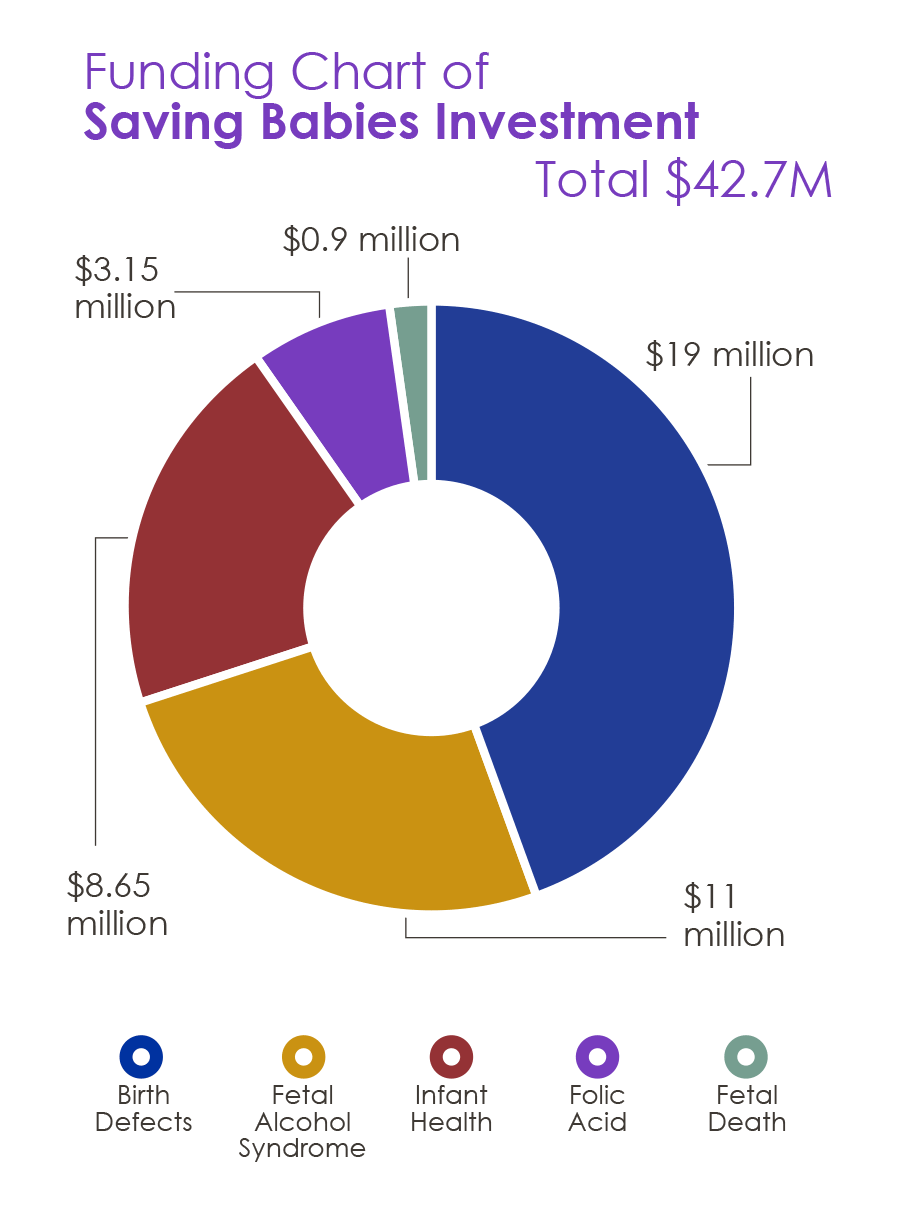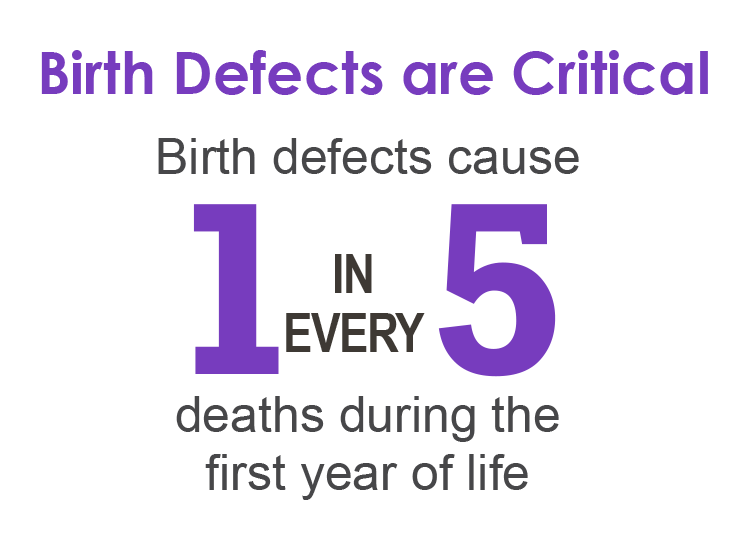Saving Babies

Every 4½ minutes
an American baby is born with a major birth defect.
Birth defects are common, costly, and critical. CDC’s National Center on Birth Defects and Developmental Disabilities (NCBDDD) saves babies by preventing birth defects. NCBDDD identifies causes of birth defects, finds opportunities to prevent them, and improves the health of those living with birth defects.

How NCBDDD makes a difference
Birth Defects
Women and their doctors can make informed decisions to protect the 4 million babies born every year using our research that shows links between birth defects and specific medicines, and mothers who smoke or drink alcohol.
Fetal Alcohol Syndrome
14 universities and professional organizations in collaboration with NCBDDD are providing proven tools and resources to healthcare providers and health systems to help pregnant women reduce their use of alcohol.
Infant Health
Parents, healthcare professionals, and early childhood educators use educational resources developed by NCBDDD to help them identify children with developmental delays early so they can get the help they need to reach their full potential.
Folic Acid
NCBDDD’s research supported folic acid fortification, which saves the United States $300-$600 million every year.
Fetal Death
We learn more about the causes, getting closer to the ultimate goal of preventing fetal death.
2016 Successes
-
Responded to Zika Virus
CDC’s birth defects experts led efforts to reduce the risk and impact of Zika virus in pregnant women, infants, and children. The established experts allowed CDC to rapidly build monitoring systems to understand the problem and upcoming challenges, improve prevention of Zika virus infection during pregnancy, and offer healthcare providers recommendations for caring for their patients. With supplemental funding, 50 jurisdictions are now establishing or enhancing systems to monitor Zika-related birth defects through September 2017. -
Fortification of Corn Masa Flour
About 40 fewer infants every year will be born without neural tube defects (serious birth defects of the brain and spine) thanks to folic acid fortification of corn masa flour. CDC research informed the Food and Drug Administration’s decision. This adds to the more than 10,000 babies born healthy due to CDC’s work in folic acid enrichment of wheat flour beginning in 1998. -
Detecting Top Birth Defect Risk Factors
The National Birth Defects Prevention Study identified important factors that can increase a couple’s risk for having a baby with a birth defect, including some commonly used medicines, mothers who smoke, mothers who are overweight or obese, fever during pregnancy, occupational pesticide exposure, and mothers with poor diet or poorly treated diabetes. Avoiding these factors can increase the chance that couples will have a healthy baby. -
Preventing Birth Defects by Reducing Risk Factors
Treating for Two helps women and their healthcare providers make informed decisions about the safest treatment options before and during pregnancy through research and education. Treating for Two focuses on widely prescribed medicines and common conditions, such as depression, long-standing pain, and infections.


Priorities for the future
- Protect babies from emerging threats, such as Zika virus, that may cause birth defects.
- Support state and local preparedness for the next major threat to babies through training and technical assistance.
- Ensure every state can rapidly identify birth defects, including outbreaks, reduce risk, and understand the long-term needs for children and families affected by birth defects.
- Understand the impact of opioid use during pregnancy on the baby by studying the long-term effects of the opioid epidemic.
- Help all babies to be born without neural tube defects by discovering new preventable causes of this condition.
- Page last reviewed: July 21, 2017
- Page last updated: July 21, 2017
- Content source:


 ShareCompartir
ShareCompartir